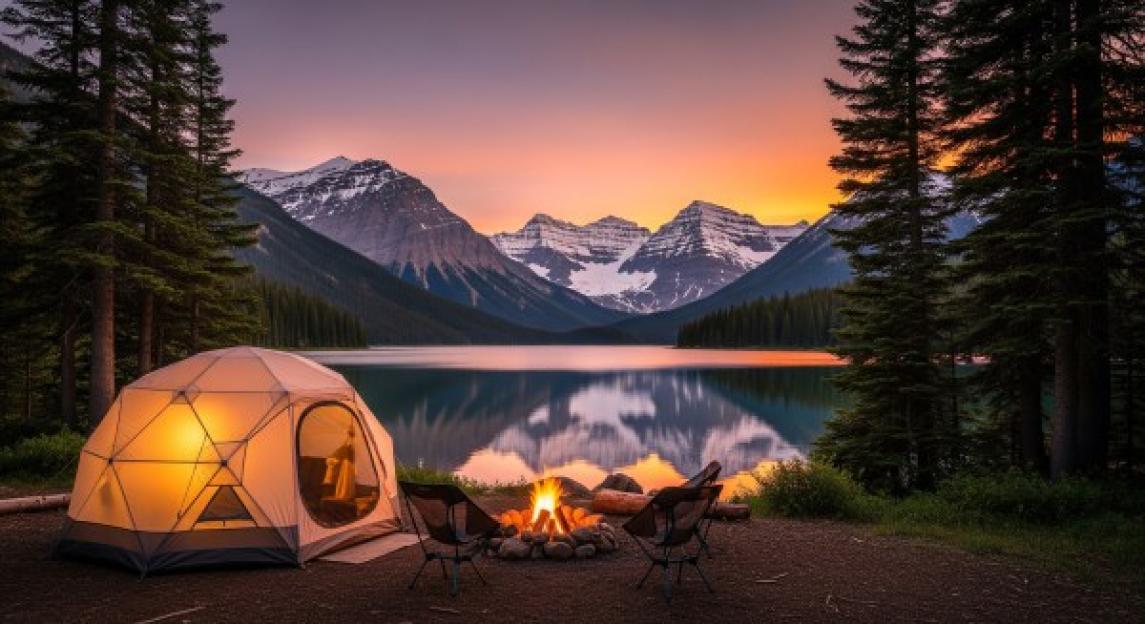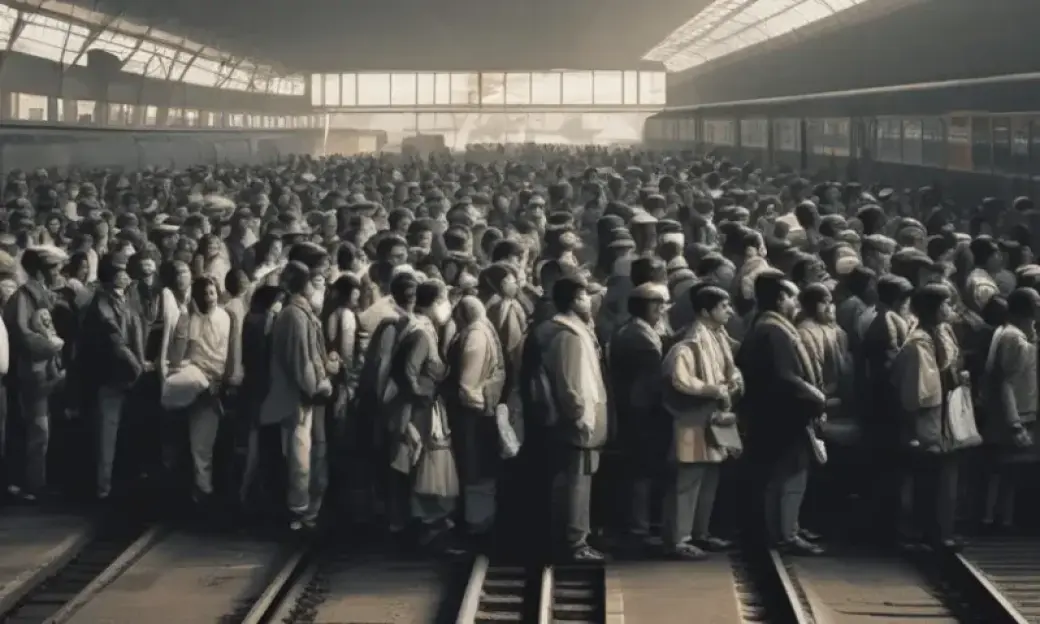No cap, India is literally the ultimate travel hack for broke Gen Z wanderers looking to flex on the ‘gram without emptying your bank account. The vibes? Immaculate. The costs? Ridiculously low. The experiences? God tier. If you’re scrolling through TikTok daydreaming about that main character energy while traveling abroad but your bank account is giving major red flags, India is THE move.
From the chaotic streets of Delhi to the serene beaches of Goa, you can live your best life for what you’d spend on a single dinner back home. It’s time to stop doom scrolling and start planning that character development journey you deserve â India is waiting, and your wallet will thank you.
Are you a US traveler dreaming of an international adventure but worried about the cost? India might be the perfect destination for your budget-friendly exploration. With its rich cultural heritage, diverse landscapes, mouthwatering cuisine, and remarkably affordable travel options, India offers an unforgettable experience without breaking the bank.
In this comprehensive guide, we’ll walk you through everything you need to know about traveling across India on a budget. From planning and preparation to transportation, accommodation, food, and activitiesâwe’ve got you covered with practical tips that will help you maximize your experience while minimizing expenses.
Why Choose India for Budget Travel?
India stands out as one of the most economical travel destinations for US travelers. Here’s why:
- Favorable exchange rate: The US dollar goes a long way in India, with $1 currently equivalent to approximately â¹83 Indian Rupees (as of 2025).
- Low daily costs: With careful planning, you can enjoy India on as little as $20-30 per day, including accommodation, food, transportation, and activities.
- Cultural richness: India offers an incredible wealth of experiencesâfrom ancient temples to bustling markets, magnificent palaces to serene natural landscapesâall accessible on a budget.
- Affordable luxury: Even budget travelers can occasionally splurge on experiences that would be prohibitively expensive in the US.
- Diverse experiences: From the Himalayan mountains to tropical beaches, from desert landscapes to lush forests, India offers incredible geographic diversity.
Planning Your Budget Trip to India
Best Time to Visit India on a Budget
Timing your visit can significantly impact your budget:
- Off-season travel (April-June, September-October): While temperatures may be more extreme, prices for accommodation and activities can drop by 20-40%.
- Shoulder seasons (February-March, July-August): These periods offer a good balance between reasonable weather and affordability.
- Avoid peak tourist season (November-January): This is when prices are at their highest, especially in popular destinations.
Visa Requirements for US Citizens
US citizens need a visa to enter India. The most cost-effective options:
- e-Tourist Visa: Apply online at least 4 days before your trip. Costs range from $25 (30-day) to $40 (1-year) to $80 (5-year), making it the most budget-friendly option.
- Regular Tourist Visa: For longer stays, available for periods of up to 10 years. More expensive but provides flexibility.
Always check the latest visa requirements and fees on the official Indian government visa website before planning your trip.
Budget-Friendly Flights from the US to India
Finding affordable flights requires strategy:
- Book 3-6 months in advance: Flight prices tend to be lowest during this window.
- Use flight comparison tools: Websites like Skyscanner, Google Flights, and Kayak can help identify the best deals.
- Consider connecting flights: Direct flights to India are convenient but typically more expensive. Flights with layovers in Europe or the Middle East can save you $200-400.
- Fly into major hubs: Delhi, Mumbai, and Bangalore often have the most competitive international fares. From there, you can use budget domestic airlines to reach other destinations.
- Best budget months to fly: February, March, and September typically offer the most affordable fares from the US to India.
Creating a Realistic India Travel Budget
For US travelers, here’s a basic daily budget breakdown:
| Expense Category | Budget Level | Mid-Range | Occasional Splurge |
|---|---|---|---|
| Accommodation | $5-15 | $16-40 | $41-100 |
| Food & Drinks | $5-10 | $11-25 | $26-50 |
| Transportation | $3-10 | $11-25 | $26-50 |
| Activities | $0-10 | $11-30 | $31-100 |
| Daily Total | $13-45 | $49-120 | $124-300 |
Money-saving tip: Set aside about 10% of your budget for unexpected expenses or special experiences.
Getting Around India on a Budget
Budget-Friendly Transportation Between Cities
India’s extensive transportation network offers many affordable options:
- Indian Railways: The backbone of budget travel in India
- Sleeper Class: The most economical option for overnight journeys ($5-15 for most routes)
- 3AC (Air Conditioned): More comfortable with bedding provided, still affordable ($10-30)
- Book through the official IRCTC website to avoid agent fees
- Reserve seats 60-90 days in advance for popular routes
- State and Private Buses:
- Often cheaper than trains for shorter distances
- State-run buses are usually more reliable and safer
- Overnight sleeper buses can save on accommodation costs
- Typically cost $3-10 for most journeys
- Budget Airlines:
- Carriers like IndiGo, SpiceJet, and Air India Express offer domestic flights
- Book 1-2 months in advance for fares as low as $30-60
- Great for covering long distances when time is limited
- Shared Jeeps and Taxis:
- Common in hill stations and remote areas
- Cost-effective when traveling with others
- Usually $2-5 for shorter journeys
Navigating Cities Without Breaking the Bank
Within Indian cities, consider these budget options:
- Metro Systems: Delhi, Mumbai, Bangalore, Kolkata, and several other cities have efficient, affordable metro networks (average fare: $0.20-0.60)
- Auto Rickshaws: Iconic three-wheelers that are perfect for short distances (typical ride: $1-3)
- Local Buses: The cheapest option, though sometimes crowded and confusing for tourists (typical fare: $0.10-0.30)
- Ride-sharing Apps: Uber and Ola operate in most major cities and offer competitive rates
- Walking: Many Indian neighborhoods are best explored on footâand it’s free!
Budget travel hack: Download the “Namma Metro”;; app for navigating public transportation in major Indian citiesâit works offline and can save you both time and money.
Affordable Accommodation Options in India
Budget Stays Across India
India offers numerous accommodation options for budget travelers:
- Hostels: Growing in popularity, especially in tourist hubs
- Dorm beds: $5-10 per night
- Private rooms: $15-25 per night
- Many offer free WiFi, common areas, and kitchen facilities
- Popular hostel chains include Zostel, goSTOPS, and Backpacker Panda
- Budget Hotels and Guesthouses:
- Basic private rooms: $10-25 per night
- Often family-run with local character
- May include simple breakfast
- Best found in person or through booking sites like MakeMyTrip or Goibibo
- Dharamshalas and Ashrams:
- Religious guesthouses open to respectful travelers
- Extremely affordable ($2-10 per night)
- Simple but clean accommodations
- Often vegetarian meals included
- Great cultural immersion opportunity
- Homestays:
- Stay with local families for $15-30 per night
- Often includes home-cooked meals
- Provides authentic cultural experiences
- Platforms like Airbnb feature many options
Money-Saving Accommodation Tips
- Location matters: Staying slightly outside the main tourist areas can reduce costs by 30-50%
- Negotiate longer stays: Discounts of 20-40% are possible for stays of a week or longer
- Travel in pairs or groups: Per-person costs drop significantly when sharing rooms
- Consider overnight transportation: Save a night’s accommodation cost when taking overnight trains or buses
- Use offline maps: Download areas in Google Maps to find your way to accommodations without using data
Eating Well on a Tight Budget
Where to Find Delicious, Affordable Food
India is a paradise for budget food lovers:
- Street Food: The most affordable and often most delicious option
- Typical dishes like pani puri, vada pav, or momos: $0.50-2
- Follow the locals and busy stalls for better food safety
- Try chaat, dosas, paratha, and regional specialties
- Local “Tiffin”;; Restaurants:
- Simple restaurants serving home-style meals
- Full meals for $2-4
- “Thali”;; (set meal with multiple items) offers excellent value
- Dhaba Roadside Eateries:
- Authentic, inexpensive dining along highways
- Popular with truck drivers and locals
- Hearty portions of regional specialties for $2-5
- South Indian Canteens:
- Vegetarian meals like idli, dosa, and uttapam
- Nutritious and extremely affordable ($1-3)
- Often self-service with quick turnover
- Religious Institutions:
- Many temples, gurudwaras (Sikh temples), and other religious places offer free or donation-based meals
- Particularly common at Sikh gurudwaras, which welcome all visitors regardless of faith
Food Safety on a Budget
Eating safely doesn’t have to be expensive:
- Look for busy establishments with high turnover
- Observe food preparation when possible
- Stick to freshly cooked hot foods
- Carry a reusable water bottle and refill at filtered water stations
- Consider carrying basic probiotics to help your digestive system adjust
Budget food hack: Download the Zomato app to find highly-rated, affordable local restaurants with menus and price ranges.
Free and Low-Cost Activities Across India
Cultural Experiences That Won’t Cost a Fortune
India offers countless budget-friendly activities:
- Religious Sites: Most temples, mosques, and churches are free to enter or request small donations
- Public Beaches: Goa, Kerala, and Tamil Nadu offer beautiful beaches with no entrance fees
- Local Markets: Immerse yourself in colorful markets like Delhi’s Chandni Chowk or Mumbai’s Crawford Market
- Heritage Walks: Many cities offer free or donation-based walking tours
- Cultural Performances: Look for free cultural programs at institutions like India Habitat Centre in Delhi
- Museum Free Days: Many museums offer free entry on specific days of the week or month
Affordable Must-See Attractions
While some attractions charge entry fees, many are worth the modest expense:
- Taj Mahal: India’s most famous monument ($15 for foreigners)
- Amber Fort, Jaipur: Magnificent Rajasthani architecture ($7)
- Hampi Ruins: Ancient temple complex in Karnataka ($8)
- Khajuraho Temples: Famous for intricate carvings ($6)
- Periyar Wildlife Sanctuary: Nature and wildlife viewing ($10)
Money-saving tip: Many attractions offer significant discounts if you have an International Student Identity Card (ISIC).
Regional Budget Travel Guides
North India on a Budget
- Delhi: Explore Old Delhi’s markets, visit Humayun’s Tomb ($5), enjoy free entry to Lodhi Gardens
- Varanasi: Watch sunrise ceremonies along the Ganges, explore ancient alleyways
- Amritsar: Visit the Golden Temple (free entry, free meals)
- Dharamshala/McLeod Ganj: Hiking trails, Buddhist temples, Tibetan culture
- Budget estimate: $25-30 per day
South India on a Budget
- Kerala Backwaters: Canoe rides ($5-10) instead of houseboats
- Mysore: Palace visits, local markets, Chamundi Hill
- Hampi: Ancient ruins, boulder landscapes, riverside relaxation
- Gokarna: Alternative to Goa with quieter, cheaper beaches
- Budget estimate: $20-25 per day
Western India on a Budget
- Budget Goa: Stay in Arambol or Palolem for affordable beach experiences
- Rajasthan: Desert camping, heritage walks, step wells
- Gujarat: Kutch handicraft villages, Little Rann of Kutch wildlife
- Budget estimate: $25-35 per day
Eastern India on a Budget
- Kolkata: Colonial architecture, intellectual culture, Bengali cuisine
- Darjeeling: Tea plantations, mountain views, hiking trails
- Sikkim: Monasteries, trekking, pristine landscapes
- Budget estimate: $20-30 per day
Money-Saving Travel Hacks for India
Digital Tools for Budget Travelers
- UPI Payment Apps: Set up apps like Google Pay or PhonePe for cashless transactions with lower fees
- IRCTC App: Book train tickets without service charges
- Offline Maps: Download Google Maps areas to navigate without data
- WhatsApp: Widely used for communicating with accommodations and guides
- Practo: Find affordable medical help if needed
Cultural Practices That Save Money
- Removing shoes: Many places require removing shoesâwear easily removable footwear to save time
- Bargaining: Expected in markets and with tuk-tuk driversâstart at 50% of the initial asking price
- Water conservation: Carrying a reusable bottle with a filter saves money and reduces plastic waste
- Eating with hands: Traditional in many parts of Indiaâlearn the proper technique (right hand only)
- Modest dress: Covering shoulders and knees can prevent the need to rent coverings at religious sites
Health and Safety on a Budget
Affordable Travel Insurance Options
Travel insurance is essential, even for budget travelers:
- World Nomads: Popular among backpackers, with basic plans around $80-150 per month
- SafetyWing: Subscription-based insurance starting at $42 for 4 weeks
- GeoBlue: US-based company with good medical coverage
Free and Low-Cost Safety Precautions
- Register with the US State Department’s STEP program (free)
- Save emergency contacts and embassy information offline
- Use registered taxis and transportation, especially at night
- Stay hydrated with filtered water
- Trust your instincts and research areas before visiting
Sustainable Budget Travel in India
Eco-Friendly Budget Options
Sustainable travel can also be budget-friendly:
- Homestays: Support local families directly while reducing your environmental footprint
- Plastic-Free Travel: Carry a reusable water bottle, cloth shopping bag, and metal straw
- Public Transportation: Lower your carbon footprint while saving money
- Local Restaurants: Support local businesses and reduce food miles
- Responsible Tourism: Choose operators with fair employment practices and environmental commitments
Social Enterprises and Volunteer Opportunities
- Walking Tours: Some cities offer tours run by rehabilitated street youth
- Craft Cooperatives: Purchase directly from artisan groups
- Community Cafés: Eateries that provide training and employment for marginalized groups
- Short-Term Volunteering: Organizations like Waste Warriors accept day volunteers for cleanup events
Planning a Sample Budget Itinerary
Two-Week North India Budget Circuit
Total Budget: Approximately $450-550 (excluding international flights)
Day 1-3: Delhi
- Stay: Zostel Delhi ($8/night in dorm)
- Activities: Free walking tour, Jama Masjid, Lodhi Gardens
- Transportation: Metro card ($5 for multiple days)
Day 4-6: Agra and Fatehpur Sikri
- Transportation to Agra: Train ($5)
- Stay: Backpacker Panda ($10/night)
- Activities: Taj Mahal ($15), Agra Fort ($7)
- Side trip to Fatehpur Sikri: Local bus ($2)
Day 7-10: Jaipur
- Transportation to Jaipur: Bus ($7)
- Stay: Zostel Jaipur ($9/night)
- Activities: Amber Fort ($7), City Palace ($7), markets (free)
Day 11-14: Varanasi
- Transportation to Varanasi: Overnight train ($15)
- Stay: Stops Hostel Varanasi ($7/night)
- Activities: Sunrise boat ride ($5), walking tours (free/tips)
- Transportation back to Delhi: Flight ($50) or train ($15)
Two-Week South India Budget Circuit
Total Budget: Approximately $400-500 (excluding international flights)
Day 1-3: Chennai and Mahabalipuram
- Stay: Red Lollipop Hostel ($7/night)
- Activities: Marina Beach (free), Government Museum ($2)
- Day trip to Mahabalipuram: Bus ($3 round trip)
Day 4-7: Pondicherry and Auroville
- Transportation to Pondicherry: Bus ($4)
- Stay: YMCA ($15/night for private room)
- Activities: French Quarter (free), Auroville (free/donation)
Day 8-11: Madurai and Rameshwaram
- Transportation to Madurai: Train ($8)
- Stay: Madurai Hostel ($6/night)
- Activities: Meenakshi Temple ($2 camera fee), street food tours
- Day trip to Rameshwaram: Bus ($5 round trip)
Day 12-14: Munnar
- Transportation to Munnar: Bus ($6)
- Stay: Homestay ($15/night including breakfast)
- Activities: Tea plantation tours ($3-5), hiking (free)
- Return to Kochi for departure: Bus ($5)
Common Budget Travel Mistakes to Avoid in India
Planning Pitfalls
- Overpacking: Carrying too much increases transportation costs and limits mobility
- Rigid Itineraries: Allow flexibility for unexpected opportunities and challenges
- Overlooking Shoulder Seasons: Traveling during peak season means higher prices
- Ignoring Local Holidays: Prices spike during Indian holidays like Diwali and summer vacations
On-the-Ground Errors
- Using Only Cash: While useful, relying solely on cash means more ATM fees and security risks
- Overtipping: While appropriate, excessive tipping can strain your budget
- Tourist Restaurant Traps: Eating exclusively at tourist-oriented restaurants costs 3-4 times more
- Neglecting Water Quality: Getting sick can derail your budget with medical expenses
- Forgetting to Negotiate: Accepting first prices can significantly impact your budget
Connecting with Other Budget Travelers
Budget Travel Communities
- Hostel Common Areas: Natural gathering places for exchanging tips
- Facebook Groups: “Backpacking India”;; and “India Travel”;; groups have active communities
- Couchsurfing Events: Free meetups in major cities, even if you’re not staying with hosts
- Reddit: r/backpacking and r/shoestring offer valuable advice
- Travel Buddy Apps: Tourlina and Backpackr help find travel companions to share costs
Conclusion: The Richness of Budget Travel in India
Traveling India on a budget isn’t just about saving moneyâit’s about experiencing the country in a more authentic, connected way. By using local transportation, eating where Indians eat, and staying in family-run accommodations, you’ll gain insights into daily life that luxury travelers often miss.
The value of travel isn’t measured in dollars spent but in experiences gained. In India, a modest budget doesn’t mean modest experiences. From the snow-capped Himalayas to the tropical beaches of Kerala, from ancient temples to bustling modern cities, India offers an incredible wealth of experiences that are accessible to travelers of all budgets.
With careful planning, realistic expectations, and an open mind, your budget journey through India can be one of the most rewarding travel experiences of your lifeârich in cultural encounters, flavors, sights, and memories that will last a lifetime.
FAQs About Budget Travel in India
Q: Is India safe for solo travelers on a budget? A: Yes, with proper precautions. Solo travelers should research destinations carefully, stay in well-reviewed accommodations, and be cautious after dark, especially in unfamiliar areas.
Q: How much Hindi do I need to know to travel on a budget in India? A: Basic phrases like “thank you”;; (dhanyavaad) and “how much”;; (kitna) are helpful, but English is widely spoken in tourist areas. Learning numbers in Hindi can be particularly useful for negotiating.
Q: Can I use credit cards while traveling on a budget in India? A: Credit cards are accepted at mid-range establishments, but for budget travel, cash is often necessary. Major cities increasingly accept UPI payments through apps, which can be linked to international cards.
Q: What’s the best way to access money as a budget traveler in India? A: Use ATMs at reputable banks (State Bank of India, HDFC, ICICI) to withdraw larger sums less frequently to minimize fees. Notify your bank of travel plans to prevent card blocks.
Q: Is street food in India safe for budget travelers? A: Much street food is safe when purchased from busy stalls with high turnover. Look for food cooked fresh in front of you, avoid raw items if you have a sensitive stomach, and follow local crowds.
Q: What’s the minimum daily budget needed to travel in India? A: Determined budget travelers can manage on $15-20 per day, covering basic accommodations, street food, public transportation, and some activities. $30 per day provides more comfort and options.
About the Author: Jaspal is a budget travel specialist who has explored India extensively over the past decade, always finding new ways to experience the country’s incredible diversity without breaking the bank.







